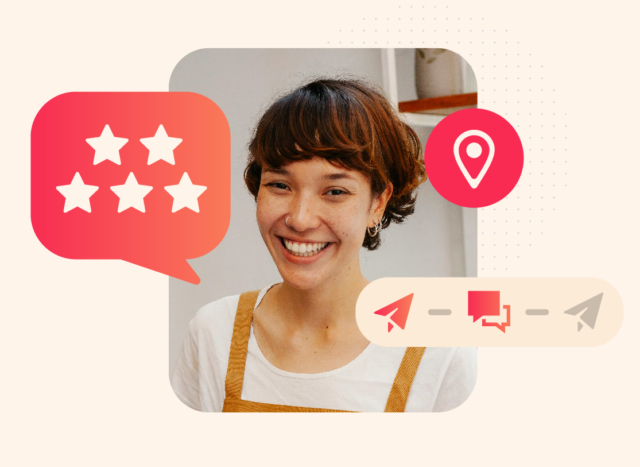Is It Human? How Are Conversational Chatbots Changing The Game In Recruitment?

For years, the word “chatbot” conjured images of clunky, pre-programmed responses and frustrating dead ends. Trying to get help from these early bots often felt like navigating a maze of keywords, most likely leaving users more confused than satisfied.
However, we’re happy to announce that with the rise of AI, things have changed dramatically. Today’s chatbots are evolving, becoming genuinely conversational and offering a far more human-like interaction.
You might be wondering, how have chatbots transformed and how can this evolution help me as a recruiter…keep reading to find out!
The rise of Natural Language Processing (NLP)
The key to a conversational chatbot lies in its ability to understand and respond to natural human language. This is where Natural Language Processing (NLP) comes in. NLP is a branch of Artificial Intelligence (AI) that focuses on enabling computers to understand, interpret, and generate human language.
Thanks to advancements in NLP, chatbots can now:
Understand intent: They don’t just look for keywords; they understand the meaning behind your words. For example, if you type “I need help with my password,” the chatbot understands you’re looking for password assistance, not just the word “password.”
Handle complex sentences: Forget rigid, pre-defined commands. Modern chatbots can parse complex sentence structures and understand the relationships between different parts of a sentence.
Recognise context: They can remember previous parts of the conversation, allowing for more natural and flowing dialogues. You don’t have to repeat information constantly.
Deal with misspellings and typos: We’re human, we make mistakes. Smart chatbots can often decipher misspelled words and understand what you meant to say.
Forget about rich text, it’s all about rich interactions
Beyond understanding language, conversational chatbots are also becoming more interactive:
Use rich media: Think beyond just text. Chatbots can now incorporate images, videos, and even interactive elements like buttons and carousels, making the experience more engaging.
Personalise the experience: By integrating with Recruitment CRM systems, chatbots can access user data to personalise conversations, offering tailored recommendations and support.
Offer proactive support: Instead of just waiting for users to initiate contact, some chatbots can proactively offer assistance based on user behavior or triggers.
Slash time-to-hire and ‘wow’ candidates with conversational chatbots: The job search can feel like navigating a maze blindfolded, but chatbots are changing the game, offering candidates a direct line of communication with potential employers. Think of them as virtual recruitment assistants, available 24/7 to answer questions, provide updates, and guide candidates through every step of the hiring journey. Allowing you and your team to reduce time to hire exponentially.
Instant answers, anytime: Candidates have questions – about the role, the company culture, the next steps. Instead of waiting days for an email reply, chatbots provide instant answers to frequently asked questions, empowering candidates with the information they need, when they need it. Supporting them to make rapid decisions about the role.
Personalised guidance: Chatbots can gather information about a candidate’s skills and experience to suggest relevant open positions, ensuring a better fit and saving candidates time scrolling through irrelevant listings. They can also support AI-Driven Internal Mobility by identifying internal career opportunities for existing employees, helping organisations retain top talent and streamline internal career progression.
Application assistance: Navigating online application systems can be cumbersome. Chatbots can help candidates through the process, answering questions about required documents, deadlines, and even providing tips for crafting a compelling resume.
Interview prep: Nerves can get the better of even the most experienced candidates. Chatbots can offer interview tips, practice questions, and even provide feedback on mock answers, helping candidates feel more confident and prepared.
Real-time updates: The dreaded silence after submitting an application can be agonizing. Chatbots can provide real-time updates on the status of a candidate’s application, keeping them informed and engaged throughout the process.
Feedback and transparency: Even if a candidate isn’t selected, chatbots can provide constructive feedback, offering valuable insights for future job searches. This level of transparency builds trust and enhances the employer’s brand reputation.
Let’s address the elephant in the room? Will chatbots replace humans?
While some might worry that chatbots are poised to eliminate human involvement entirely. We’re delighted to confirm they are not. Actually, they’re powerful tools that augment human capabilities. The future of recruitment isn’t about robots versus humans; it’s about humans and AI working together to create a more efficient and effective hiring process.
By handling routine tasks and answering questions accurately, chatbots free up recruiters to focus on more strategic activities, such as building relationships with candidates and conducting in-depth interviews. This allows for a more human-centric approach to recruitment, even with the involvement of AI.
By embracing conversational AI, companies can create a more positive and engaging experience for candidates, attracting top talent and building a strong Employer Brand. The future of candidate engagement is conversational, and it’s powered by chatbots.
If you would like to continue the conversation on chatbots, we would be delighted to hear from you!



